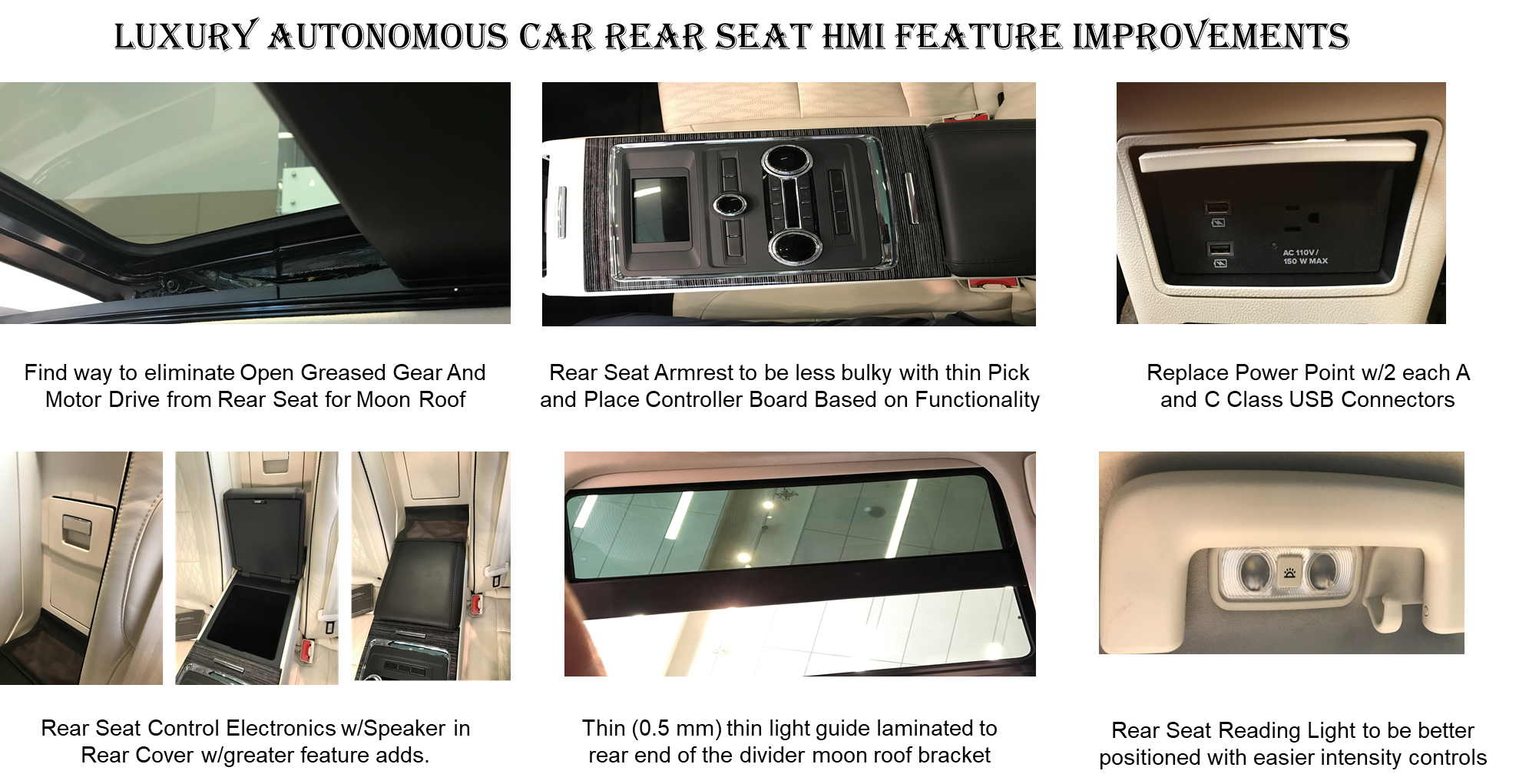Autonomous vehicles are going to start hitting the road beginning 2020 calendar year. It is assumed that in North America there will be 100,000 of these for various applications by that year. Will try to bring information on HMI Technology Applications on these vehicles.
The September premier issue of Autonomous Vehicle Technology (www.autonomousvehicletech.com) highlighted technology innovations that are being reviewed by suppliers and OE’s for integration.
Challenges not Yet Addressed:
So far based on all the investigates by Design HMI LLC the concentration in developing autonomous vehicles has been on safety – and rightfully so. However, have always believed that reliability and quality is a given whenever new product or innovations are introduced. When someone goes to buy an Autonomous Vehicle from Ford, Audi, Volvo, Mercedes, GM and others reliability is assumed based on faith in the corporate name.
But what about driver experience when riding in interior of self-driving car for longer than 30-minute travel distance. Riding in a Cab / Uber for more than 30 minutes is tiring and not enjoyable – for the passenger that is self-driving. Most of the self-driving examples have seen are standard cars with standard semi-blocked vision that lends nothing to driver experience. There has been little to no discussion on that subject.
Passenger in car experience both in rear seat and front will decide the ultimate acceptance of this new form of transportation – lower accident rate by itself do not believe will be enough.
Below are just few of those mentioned in the field of Human Machine Interface.
Volvo concept shown above avoids some of the thorny issues surrounding human/machine interactions by allowing motorists to enable self-driving with a switch. When it’s activated, the car would operate in fully automated fashion, never asking drivers to remain on guard.
ZF is developing electronics technology to reduce driver distraction which is the highest cause for accidents after over-speeding. Their all-electrical Vision Zero Vehicle and innovative safety systems is directed for autonomous vehicles in the future. For more information CLICK https://www.zf.com/corporate/en_de/products/innovations/vision_zero_vehicle/vision_zero_vehicle.html.
Continentals next generation Environmental Model with their High-Resolution 3D Flash LIDAR system is another example.
Adient AI18B showcases new interior for automotive seating in autonomous vehicles. Their unique concepts can be viewed by clicking http://www.adient.com/.
VW has started a new Transparent Factory with 6 mobility teams beginning startup incubator in Dresden.
Ford has already started pilot project with Michigan based Pizza company to use autonomous vehicles to deliver pizzas to people. Others like Mercedes have been running similar type trials since 2016.
Faurecia has been working with Tesla and others to bring to market faster innovations in interiors for autonomous vehicles. They have part partnered with companies like Jiangxi Coagent Electronics, Parrot Automotive, ZF and others.
Another is Trezor Electric GT with their touch optimized customizable touch operated dash with OLED technology.
The VW Cedric is designed like a moving office with controls positioned in compact overhangs.
A few others are like FNR-X are worth mentioning whose primary infotainment screen echoes the shape of the grille, and is one of the cabin’s many hexagonal elements with OLED technology used here to facilitate screen-based connectivity functions for individual FNR-X passengers.
Chrysler Portal Concept has in vehicle wireless, facial recognition and voice biometrics to customize settings.
In many vehicle designs, especially as it impacts luxury cars, more attention needs to be given to rear seat passengers. This is becoming very important with car share, Uber type quality taxis and autonomous vehicles. In many luxury cars, there is virtually no leg room for rear seat passengers. How many times have three people gotten into a taxi with either the front or rear passenger having a very uncomfortable ride.
Am sure OE’s have looked at their customer base for those vehicles and have concluded that rear seat comfort is not important; though for countries where more than one or two people sit in car it is very important.
Design HMI core competence is Human Machine Interface so our comments are restricted to that aspect of rear seat passenger comfort. 6 early suggestions:







Companion, this internet web site will probably be fabolous, i merely like it